Farmed fish may fill freezers—but wild fish fuel legends.
These native swimmers haven’t just survived—they’ve thrived, powering through rivers, lakes, and currents for thousands of years without human help.
They’re leaner. Cleaner. Tougher.
And when it comes to nutrition? They blow their farm-raised cousins out of the water. No crowded tanks. No artificial feed. Just pure, natural muscle built by the wild.
These are the champions of their waters.
Strong, smart, and built to last. They’ve adapted to their home turf and, in doing so, become some of the healthiest food sources on the planet.
Meet 13 native fish that prove nature still does it best.
No nets. No shortcuts. Just real-deal strength—and flavor—you can taste.
Sockeye Salmon

Renowned for its brilliant red flesh, the Sockeye Salmon is a powerhouse of nutrients. Rich in omega-3 fatty acids, it supports heart health and reduces inflammation.
This fish thrives in the wild, particularly in the rivers of Alaska and the Pacific Northwest. Its life cycle is a testament to strength, as it navigates upstream to spawn.
Unlike farmed varieties, wild Sockeye offers a more complex flavor profile, influenced by its natural diet. This vibrant swimmer stands out for its resilience and nutritional superiority, making it a favorite among chefs and health enthusiasts alike.
Rainbow Trout
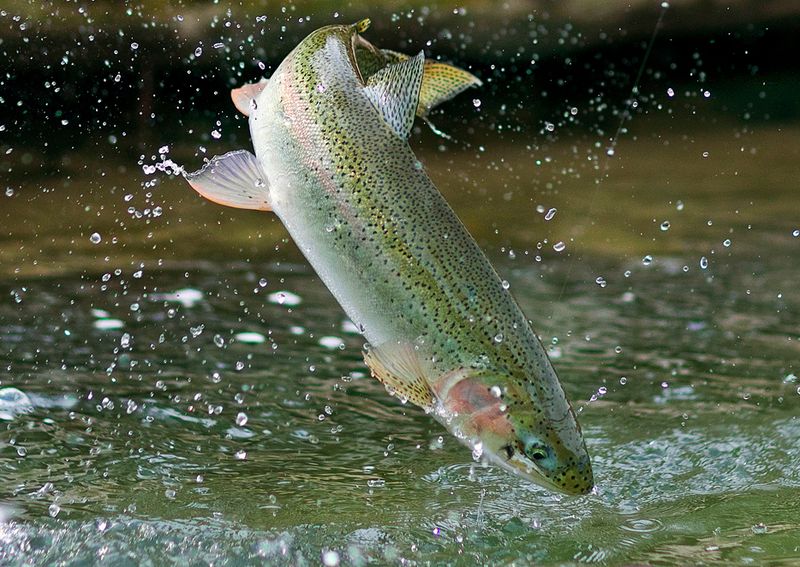
With a splash of color and a burst of energy, the Rainbow Trout captivates both anglers and nutritionists. Native to North America’s cold-water tributaries, this fish is packed with proteins and essential nutrients.
Its adaptability to various environments showcases its robust nature. The Rainbow Trout’s diet in the wild contributes to its mild, delicate flavor, distinct from farm-raised types.
Its beauty is matched by its health benefits, making it a symbol of strength and vitality in nature’s aquatic tapestry.
Atlantic Mackerel
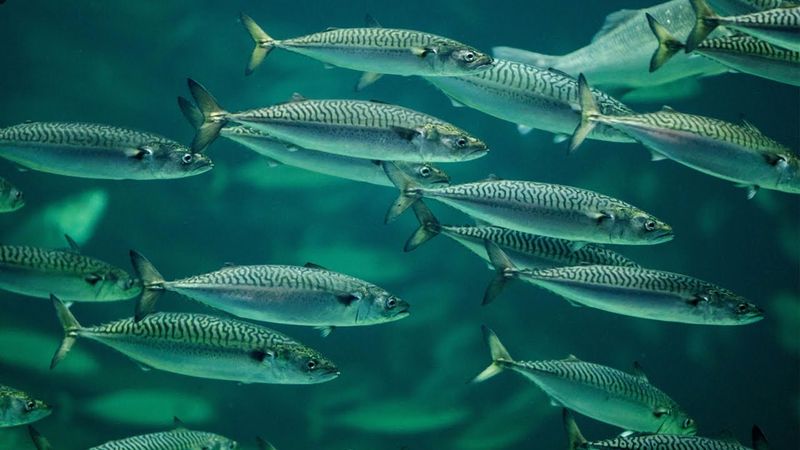
Atlantic Mackerel, with its striking appearance, is a nutritional dynamo. High in healthy fats and vitamin B12, this fish supports brain function and energy levels.
Found in the North Atlantic, it migrates in large schools, displaying remarkable agility. Its natural habitat ensures a diet that enhances its rich flavor, setting it apart from its farmed relatives.
The Atlantic Mackerel’s endurance and nutritional profile make it a top choice for those seeking strength and health from the sea.
Brook Trout
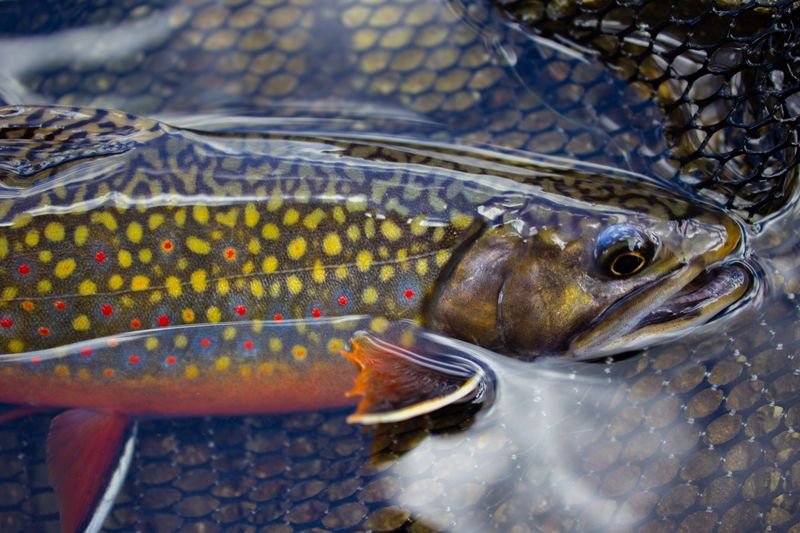
The Brook Trout, with its enchanting speckled skin, is a true gem of the forest streams of Eastern North America. Its survival in pristine, oxygen-rich waters speaks to its strength and health.
Rich in omega-3s and lean protein, it supports cardiovascular health. The Brook Trout’s wild-caught flavor is delicate yet distinctive, offering a sensory experience unlike farmed fish.
Its presence in unspoiled habitats underscores its role as an indicator of environmental health and biodiversity.
Alaskan King Salmon

The Alaskan King Salmon, or Chinook, reigns supreme with its impressive size and rich taste. This native giant of the North Pacific is celebrated for its high omega-3 content, promoting heart and brain health.
Its journey across the rugged Alaskan waters is a testament to its endurance. Unlike farmed counterparts, the King Salmon’s diet of natural prey imparts a buttery, complex flavor.
Its majestic presence and superior nutritional value make it a crown jewel in the world of seafood.
Arctic Char
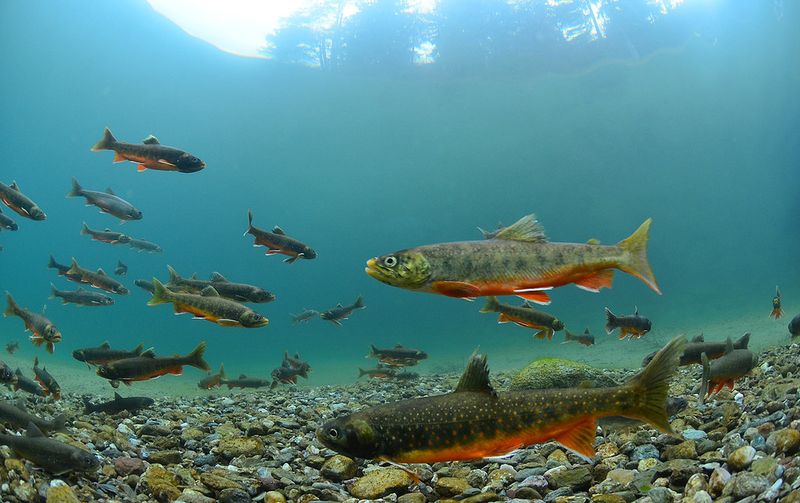
Known for its striking colors and rich taste, Arctic Char thrives in cold, pristine waters. This fish provides a healthy dose of omega-3 fatty acids, promoting heart health and reducing inflammation.
Arctic Char is versatile in the kitchen, offering a unique flavor that complements a variety of dishes. Its lean meat and firm texture make it ideal for grilling and baking.
Fun fact: Despite its name, Arctic Char is closely related to both salmon and trout, sharing a similar lifespan and migratory patterns. Its adaptability to various environments underscores its robustness.
Bluefish

Bluefish are known for their fierce nature and dynamic swimming abilities. Their high levels of omega-3 fatty acids contribute to brain and heart health.
These predatory fish are flavorful, offering a robust taste that stands out in culinary dishes. Ideal for grilling, their meat becomes tender and juicy when cooked over an open flame.
Despite their aggressive demeanor, Bluefish are a beloved choice for anglers and chefs alike. Did you know? Bluefish can swim at speeds up to 50 miles per hour, showcasing their incredible strength and agility.
Yellowtail Amberjack
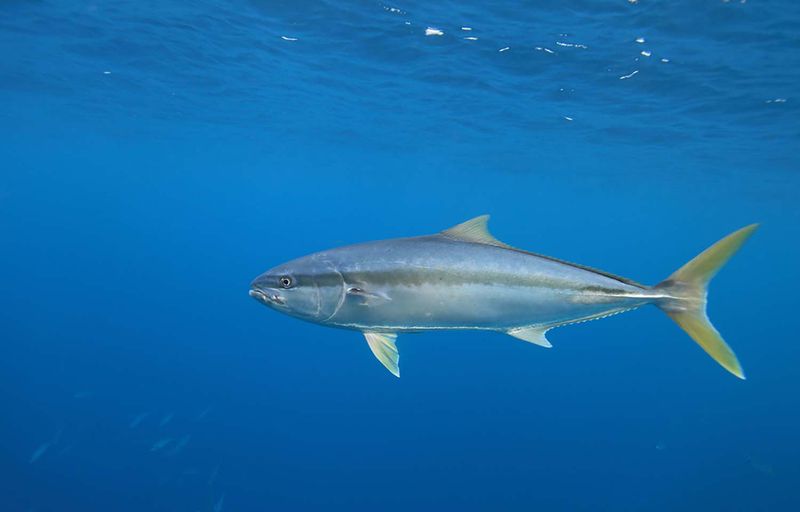
Yellowtail Amberjack is celebrated for its buttery texture and mild flavor. High in protein and essential vitamins, this fish supports muscle growth and overall health.
In Japanese cuisine, it is often served as sashimi, appreciated for its delicate taste. When grilled, its flavor intensifies, offering a succulent treat.
Interesting tidbit: The Yellowtail Amberjack is a migratory species, traveling vast distances in search of warmer waters, which contributes to its firm muscle structure and resilience.
Wild Alaskan Coho Salmon
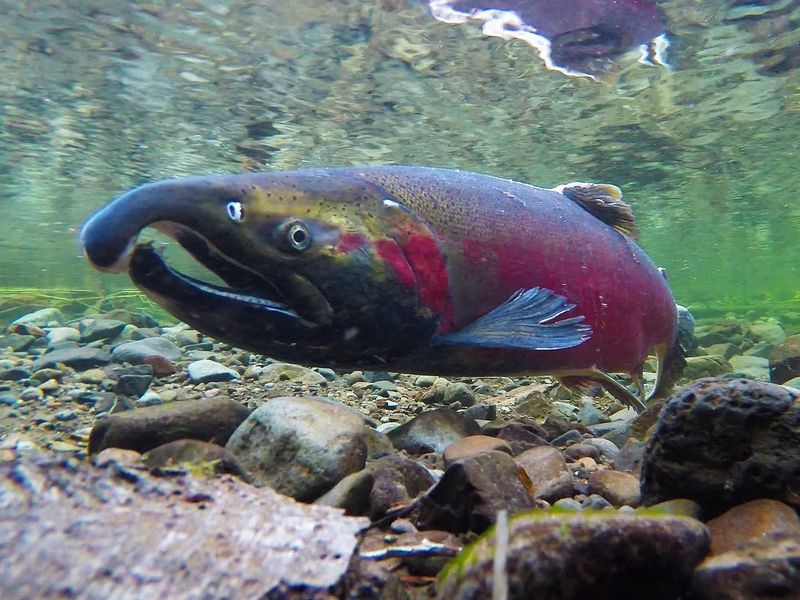
Wild Alaskan Coho Salmon is renowned for its vibrant color and health benefits. Rich in omega-3 fatty acids, it promotes cardiovascular health.
This salmon variety is versatile, used in various recipes from grilling to smoking. Its rich, flavorful flesh makes it a favorite among seafood lovers.
Did you know? The Coho Salmon is known for its spectacular migratory journey, returning to its birthplace to spawn. This journey requires incredible strength and endurance, making them a symbol of resilience.
Barramundi

Barramundi is a tropical fish celebrated for its mild flavor and dense, flaky flesh. Rich in omega-3s, it enhances heart health and reduces inflammation.
Its versatile culinary profile makes it suitable for various cooking methods, including grilling, steaming, and frying. Barramundi’s adaptable nature contributes to its popularity.
Fun fact: The name “Barramundi” is derived from an Aboriginal word meaning “large-scaled river fish.” Its popularity is growing worldwide due to its sustainable farming practices and health benefits.
Channel Catfish
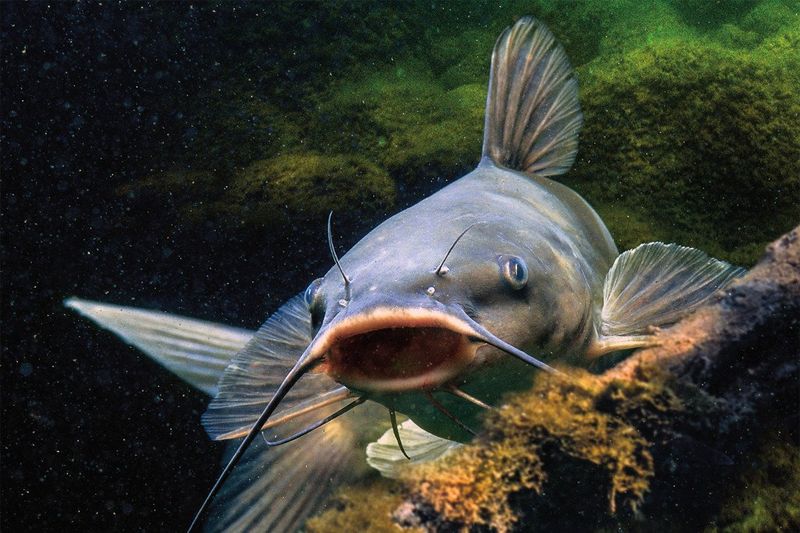
Channel Catfish is a freshwater fish known for its mild taste and tender texture. High in protein and low in calories, it’s a healthy choice for seafood lovers.
Its ability to thrive in various environments makes it a resilient species. Enjoyed fried or grilled, its meat is succulent and satisfying.
Did you know? Channel Catfish possess a keen sense of smell, using their whiskers to detect food in murky waters. This unique adaptation highlights their survival skills and versatility.
Albacore Tuna
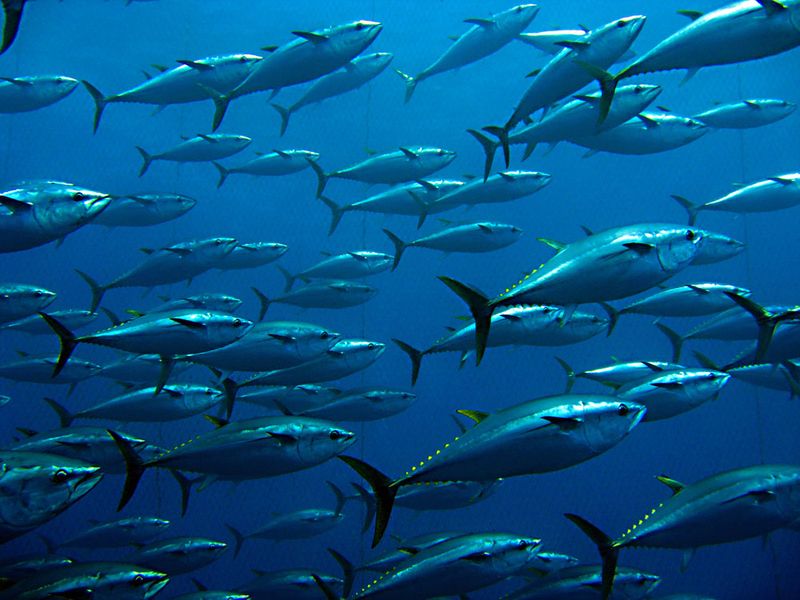
Albacore Tuna, often called “white tuna,” is prized for its delicate flavor and high omega-3 content. It supports heart health and cognitive function.
This fish’s firm texture makes it ideal for grilling, searing, and canning. Its mild flavor pairs well with various seasonings and sauces.
Fun fact: Albacore Tuna is a highly migratory species, traveling thousands of miles across oceans. This extensive travel contributes to their lean muscle and robustness, making them a powerhouse in the marine world.
Pacific Halibut
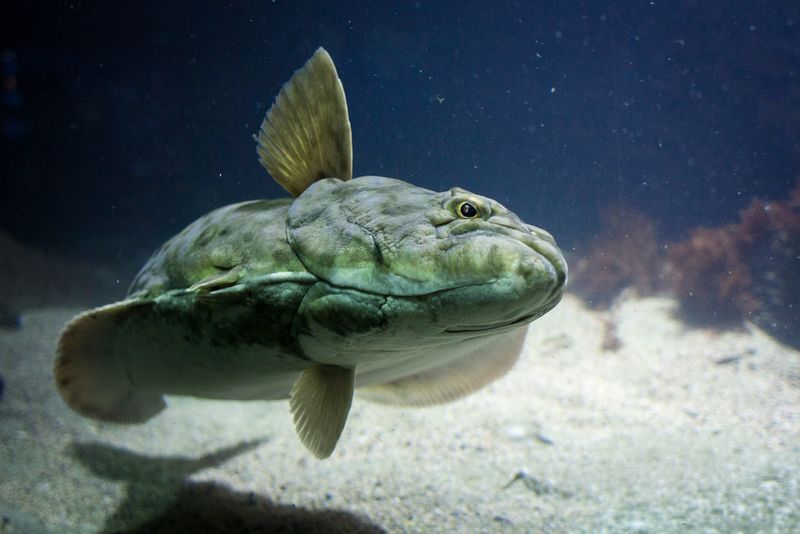
Pacific Halibut, a flatfish, is celebrated for its mild taste and flaky, tender texture. Rich in protein and essential nutrients, it supports overall wellness.
Its versatility in cooking methods, such as baking, broiling, and grilling, makes it a favorite among chefs. The firm texture holds up well to various preparations.
Interesting fact: Pacific Halibut have an impressive lifespan, living up to 55 years. This longevity is a testament to their strength and adaptability in the wild ocean environment.

